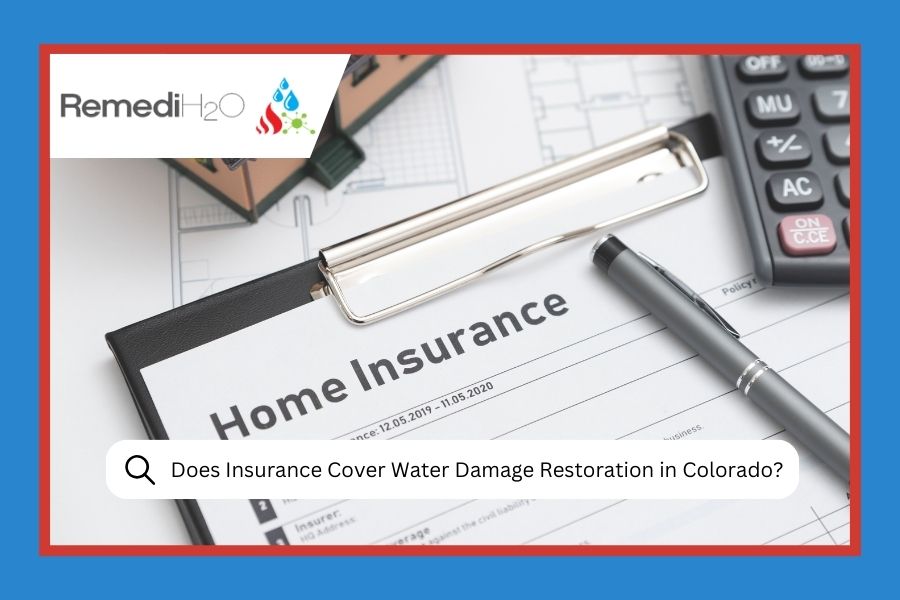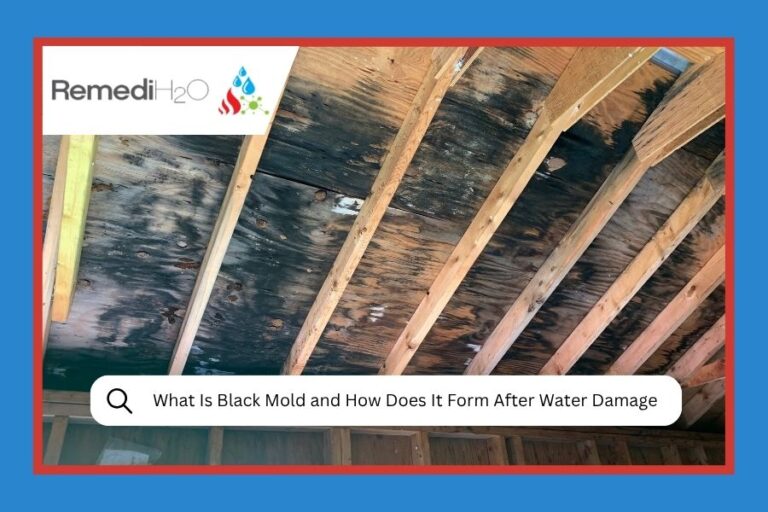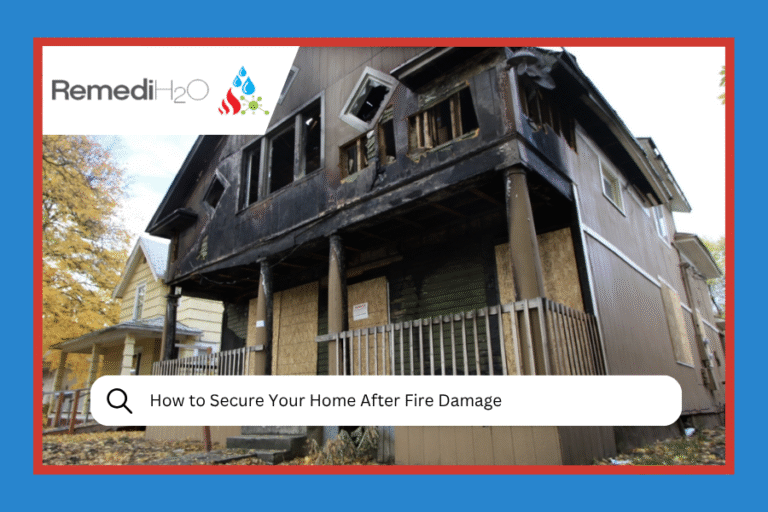Picture this: you wake up on a Tuesday morning, shuffle to the kitchen for coffee, and step into a puddle. Not exactly how you planned to start your day, right? Whether it’s from a burst pipe, a sneaky leak, or Mother Nature throwing a tantrum, water damage can turn your world upside down faster than you can say “where’s the shut-off valve?”
If you’re dealing with water damage in Colorado’s Western Slope or Roaring Fork Valley, you’re probably wondering what comes next. The good news? Water damage restoration is a real thing, and it’s exactly what it sounds like – getting your property back to normal. The even better news? Your insurance might actually help cover the costs.
Let’s dive into everything you need to know about water damage restoration and navigate the sometimes murky waters of insurance coverage in Colorado.
Understanding Water Damage Restoration: More Than Just Drying Things Out
Water damage restoration isn’t just about pointing a few fans at your soggy carpet and hoping for the best (though we wish it were that simple). It’s a comprehensive process that involves multiple steps, specialized equipment, and a lot more science than you might expect.
What Exactly Is Water Damage Restoration?
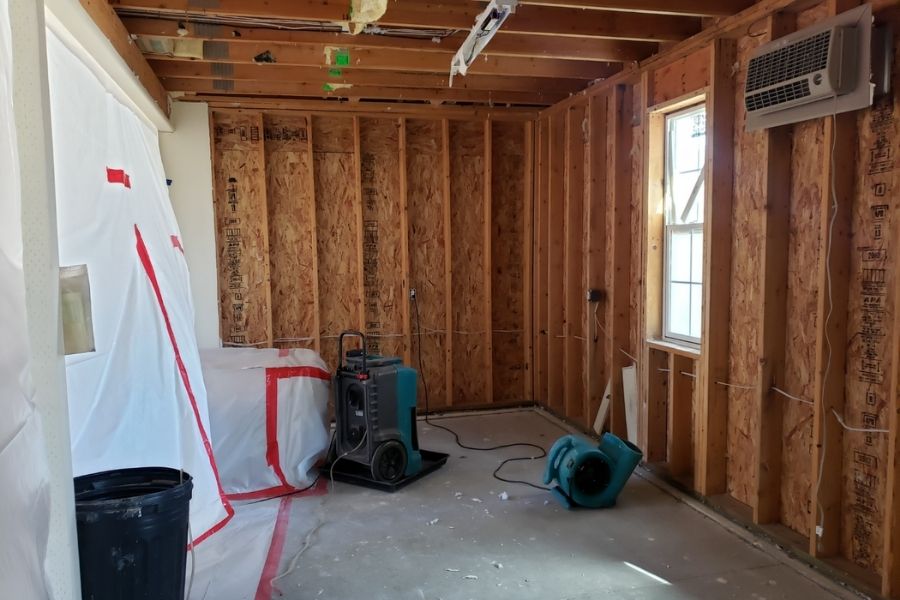
Professional water damage restoration involves specialized equipment and techniques to thoroughly dry and restore your property to pre-loss condition.
Water damage restoration is the process of returning your property to its pre-loss condition after water has caused damage. This could be from anything – a washing machine that decided to overflow, frozen pipes that burst during one of Colorado’s infamous winter storms, or even flood damage from heavy spring runoff.
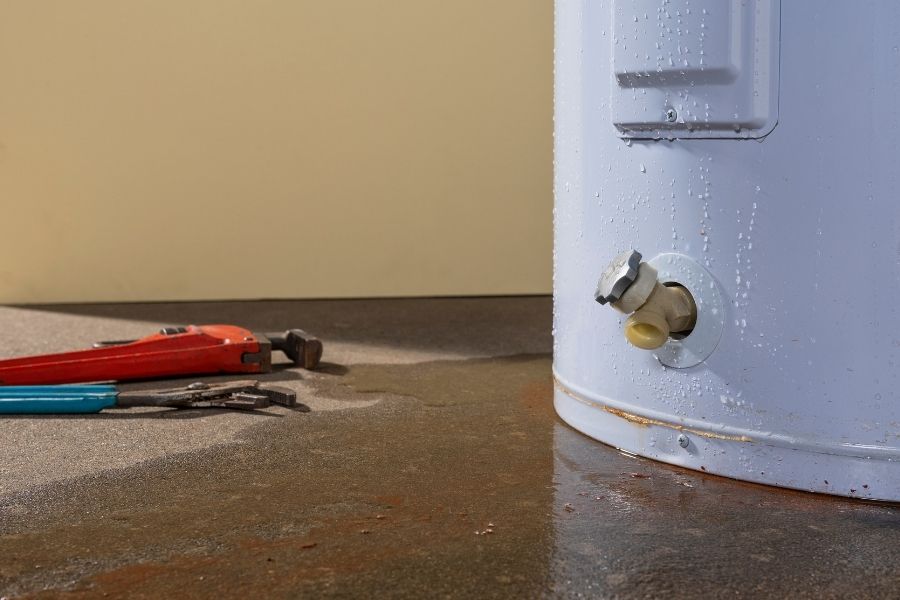
Water heater failures are one of the most common causes of residential water damage, often causing thousands of dollars in damage to flooring and surrounding areas.
The restoration process typically involves:
- Assessment and inspection of the damage
- Water extraction using industrial-grade equipment
- Drying and dehumidification to prevent secondary damage
- Cleaning and sanitizing affected areas
- Restoration of damaged materials and structures
Think of it as emergency surgery for your home. At RemediH2O, we have been performing these “operations” for over 25 years (combined team experience), and trust us, every water damage situation tells its own story. Our team follows IICRC standards to ensure every restoration project meets industry best practices.
The Science Behind Proper Water Restoration
Here’s something most people don’t realize: water damage keeps happening even after you’ve stopped the initial source. Water has this annoying habit of traveling to places you’d never expect – behind walls, under flooring, into insulation. Without proper drying techniques, you’re looking at potential mold growth, structural damage, and a whole host of other problems that’ll make your original water damage seem like a minor inconvenience.
Emergency Response & Assessment
24/7 response team arrives within hours to assess damage and identify water source
Water Extraction
Industrial pumps and vacuums remove standing water quickly to prevent further damage
Drying & Dehumidification
Strategic placement of air movers and dehumidifiers for optimal drying conditions
Cleaning & Sanitizing
Thorough cleaning to eliminate bacteria, contaminants, and odors
Restoration & Repair
Final repairs and restoration to return property to pre-loss condition
Types of Water Damage We See in Colorado
Living in Colorado means dealing with some unique water damage scenarios. Our beautiful state comes with its own set of challenges, and we’ve seen them all.
Winter-Related Water Damage
Colorado winters don’t mess around, and neither does the water damage they can cause:
Frozen Pipe Disasters
When temperatures drop below freezing (which happens more often than we’d like around here), pipes can freeze and burst. The result? Gallons of water flooding your home when you’re least prepared for it.
Ice Dam Issues
Heavy snow on your roof can create ice dams, causing water to back up and seep into your home. It’s like your house is trying to grow icicle teeth, but way less charming and way more expensive.
Year-Round Water Problems
Appliance Failures
Water heaters, washing machines, dishwashers – they all have one thing in common: they use water, and sometimes they decide to share that water with the rest of your house. A typical washing machine leak might seem minor, but it can cause thousands of dollars in damage if not addressed quickly.
Plumbing Mishaps
From overflowing toilets (everyone’s nightmare) to burst pipes in crawl spaces, plumbing problems don’t discriminate. They happen to the best of us, usually at the worst possible times.
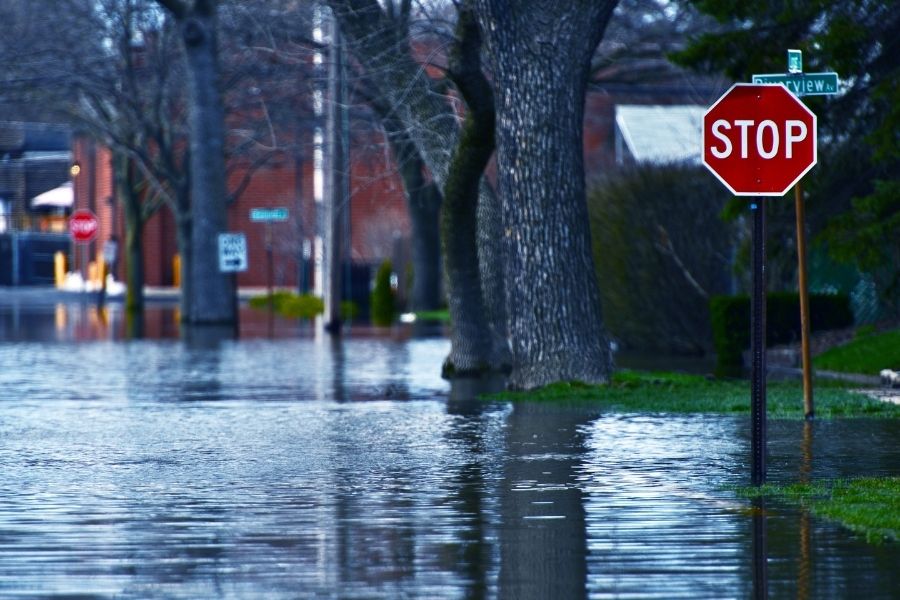
Flood damage from natural disasters or plumbing failures can affect multiple rooms and require extensive restoration efforts to prevent long-term structural issues.
Natural Disasters
Colorado might not get hurricanes, but we certainly get our share of heavy rains and flooding. The Western Slope and Roaring Fork Valley have seen their fair share of water-related weather events.
Dealing with water damage right now? Don’t wait – every minute counts when it comes to preventing further damage.
Contact Our 24/7 Emergency Team
We’ll be there fast to help minimize the damage and start the restoration process.
The Water Damage Restoration Process: What to Expect
When you call a professional restoration company (like us), here’s what typically happens:
Step 1: Emergency Response and Assessment
We show up fast – because in water damage situations, time is literally money. Our IICRC-certified team will assess the situation, identify the source of the water, and determine the extent of the damage. This isn’t just a quick look-around; it’s a thorough investigation using moisture meters and other specialized equipment.
Step 2: Water Extraction
This is where the heavy-duty equipment comes in. We’re talking industrial-grade pumps and vacuums that can remove thousands of gallons of water. It’s like giving your house a really intense spa treatment, except the opposite of relaxing.
Step 3: Drying and Dehumidification
Here’s where the science really kicks in. We strategically place air movers and dehumidifiers to create optimal drying conditions. This process can take anywhere from a few days to a week or more, depending on the extent of the damage and the materials involved.
Step 4: Cleaning and Sanitizing
Water damage often brings unwanted guests – bacteria, mold spores, and other contaminants. We clean and sanitize all affected areas to ensure your home is safe and healthy.
Step 5: Restoration
This final step involves repairing or replacing damaged materials. Sometimes it’s as simple as replacing a section of drywall; other times it might involve more extensive reconstruction work.
Colorado Insurance Coverage: The Good, The Bad, and The Confusing
Now let’s talk about everyone’s favorite topic: insurance. (That was sarcasm, in case you missed it.)
What’s Typically Covered
Most standard homeowners insurance policies in Colorado will cover water damage from:
- Sudden and accidental water damage (like a burst pipe)
- Appliance malfunctions (when your water heater decides to retire unexpectedly)
- Storm damage that causes water to enter your home
- Firefighting efforts (yes, the water used to put out fires can cause damage too)
What’s Usually Not Covered
Here’s where things get tricky:
- Flood damage (you need separate flood insurance for this)
- Gradual leaks or maintenance-related issues
- Sewer backups (unless you have specific coverage)
- Ground water seepage
Colorado-Specific Considerations
Colorado has some unique weather patterns that can affect coverage. Spring snowmelt, for example, can cause flooding that might or might not be covered depending on your specific policy and the source of the water. The Colorado Division of Insurance provides helpful resources for understanding your coverage options and rights as a policyholder.
Pro tip: Review your policy annually, especially if you live in areas prone to specific types of water damage. The Western Slope and Roaring Fork Valley each have their own weather-related risks.
Working With Insurance: Making the Process Less Painful
We’ve worked with countless insurance companies over the years, and we’ve learned a thing or two about making the claims process smoother.
Document Everything
Take photos and videos of the damage before anything gets moved or cleaned up. Your insurance adjuster will thank you, and it helps ensure you’re properly compensated for your losses.
Know Your Deductible
Understanding your deductible helps you make informed decisions about what to claim and what might be more cost-effective to handle out of pocket.
Get Professional Documentation
A professional restoration company can provide detailed documentation of the damage and necessary repairs. This isn’t just helpful – it’s often required for larger claims.
Communication Is Key
Stay in regular contact with your insurance adjuster. The squeaky wheel gets the grease, as they say, and insurance claims are no exception.
Prevention: Your First Line of Defense
While we’re always here when disaster strikes, we’d honestly prefer that you never need our services. Here are some practical steps to minimize your risk:
Winter Preparation Checklist
- Insulate pipes in unheated areas
- Know where your main water shut-off valve is (and make sure everyone in your family knows too)
- Keep cabinet doors open during cold snaps to let warm air circulate around pipes
- Let faucets drip slightly during extreme cold
- Keep your thermostat consistent when you’re away
Year-Round Maintenance
- Inspect appliances regularly for signs of wear or leaks
- Check your water pressure – high pressure can stress pipes and appliances
- Clean gutters and downspouts to prevent water backup
- Monitor your water bill for unexplained increases that might indicate a hidden leak
Know the Warning Signs
- Musty odors (could indicate hidden water damage or mold)
- Discolored walls or ceilings (often the first sign of a leak)
- Warped flooring (wood floors are especially sensitive to moisture changes)
- Higher than normal humidity levels in your home
When to Call the Professionals
Here’s the thing about water damage: it’s almost always worse than it looks on the surface. That small puddle might be the tip of the iceberg, and waiting to address it can turn a manageable situation into a major disaster.
Red Flags That Require Immediate Professional Help
| Situation | Why You Need Help | Potential Consequences |
|---|---|---|
| Any amount of sewage backup | Health hazards, contamination | Serious illness, extensive contamination |
| Water damage covering more than 10 square feet | Too large for DIY methods | Mold growth, structural damage |
| Water from unknown sources | Could be contaminated | Health risks, improper cleanup |
| Standing water for more than 24 hours | High mold risk | Extensive mold remediation needed |
| Water damage in finished basements | Hidden damage likely | Structural issues, extensive repairs |
The Cost of Waiting
We’ve seen too many situations where homeowners tried to handle water damage themselves, only to call us weeks later when mold started growing or structural problems became apparent. What could have been a $3,000 restoration project becomes a $15,000 nightmare.
Professional restoration isn’t just about having the right equipment (though that’s important). It’s about understanding how water behaves, how different materials react to moisture, and how to prevent secondary damage that can cost exponentially more than the original problem.
Mold: The Unwanted Guest That Nobody Invited
Let’s talk about everyone’s least favorite topic: mold. In Colorado’s varying humidity conditions, mold can become a problem faster than you might think, especially in areas like basements and crawl spaces.
Why Mold Develops After Water Damage
Mold spores are everywhere – they’re a natural part of our environment. But they only become a problem when they find the right conditions: moisture, organic material to feed on, and temperatures between 68-86°F. After water damage, you’ve potentially created the perfect mold playground.
Colorado’s Unique Mold Challenges
Our state’s dramatic elevation changes and varying humidity levels create interesting mold scenarios. What works for mold prevention in Denver might not be the same as what works in Aspen or Grand Junction.
If you suspect mold growth after water damage, don’t try to handle it yourself. Professional mold remediation requires specialized equipment and training to ensure it’s completely eliminated and doesn’t return.
Fire Damage and Water: A Double Whammy
Here’s something many people don’t think about: fire damage often comes with water damage. When firefighters put out a blaze, all that water has to go somewhere, and it usually ends up causing secondary damage to areas that weren’t even touched by the fire.
Fire damage restoration involves not just dealing with smoke and soot, but also addressing the water damage from firefighting efforts. It’s like dealing with two disasters at once, which is why having experienced professionals handle the entire process is crucial.
Why Choose Local Colorado Restoration Experts
When disaster strikes, you want someone who understands not just water damage restoration, but Colorado water damage restoration. There’s a difference.
We know that Colorado basements have different challenges than basements in Florida. We understand that Roaring Fork Valley winters require different preparation than Phoenix summers. We’re familiar with local building codes, local insurance companies, and local weather patterns.
Plus, we’re not some faceless national corporation. We’re your neighbors. We sponsor local high school cross country teams and little league. When you call us, you’re supporting a local, family-owned business that cares about this community because we live here too.
The Bottom Line: Don’t Go It Alone
Water damage restoration might seem straightforward, but it’s really not. There’s science involved, there are health considerations, there are insurance complications, and there are long-term consequences if it’s not done right.
At RemediH2O, we’ve been helping Colorado families and businesses recover from water damage for over 25 years. We’ve seen every type of water disaster you can imagine, and probably a few you can’t. We know how to work with insurance companies, we understand Colorado’s unique challenges, and we have the equipment and expertise to get your property back to normal quickly and safely.
Most importantly, we’re available 24/7, because water damage doesn’t keep business hours. When disaster strikes at 2 AM on a Sunday (and it always seems to), we’ll be there.
Frequently Asked Questions
Q: How quickly do I need to call for water damage restoration after an incident?
A: The sooner, the better. Ideally, you want professional help within the first 24-48 hours. Mold can start growing within 24-48 hours in the right conditions, and the longer water sits, the more damage it causes. We offer 24/7 emergency response throughout Colorado’s Western Slope and Roaring Fork Valley for exactly this reason.
Q: Will my homeowners insurance cover water damage restoration in Colorado?
A: It depends on the source and cause of the water damage. Sudden, accidental water damage (like burst pipes or appliance malfunctions) is typically covered. However, gradual damage, flood damage, or maintenance-related issues usually aren’t covered under standard policies. We work directly with insurance companies to help streamline the claims process and can help you understand your coverage.
Q: How long does the water damage restoration process take?
A: Every situation is different, but most residential water damage restoration takes 3-7 days for the drying process alone. Factors that affect timeline include the extent of damage, types of materials affected, weather conditions, and how quickly the restoration process begins. More extensive damage requiring reconstruction can take weeks or months.
Q: Can I stay in my home during water damage restoration?
A: In many cases, yes, though it depends on the extent and location of the damage. If the damage is confined to one area and doesn’t pose health risks, you can often remain in unaffected parts of your home. However, if there’s extensive damage, contaminated water involved, or if the restoration equipment is too disruptive, temporary relocation might be necessary. We’ll assess your specific situation and provide guidance based on safety and comfort considerations.
Ready to get your property back to normal? Contact RemediH2O at (970) 715-6990 for fast, professional water damage restoration throughout Colorado’s Western Slope and Roaring Fork Valley. Our IICRC-certified team is available 24/7 to help minimize damage and get your life back on track.
